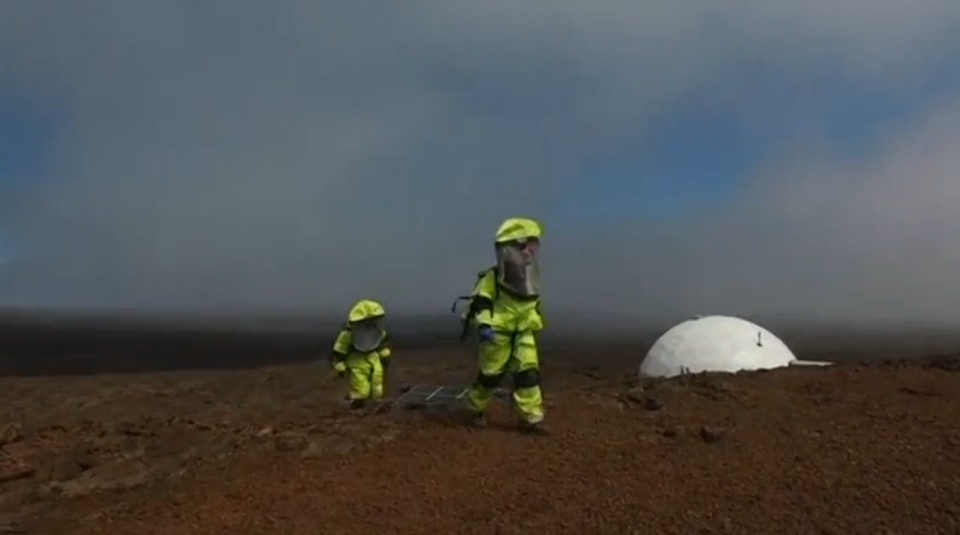
HAWAII, United States (Reuters) – Six scientists have crossed the halfway point of an eight-month stint in a dome perched atop a remote volcano in Hawaii.
This is where they are living in isolation to simulate life for astronauts traveling to Mars, the University of Hawaii said.
The study is designed to help the National Aeronautics and Space Administration better understand human behavior and performance during long space missions as the United States space agency explores plans for a manned mission to the Red Planet.
The crew members are Ansley Barnard, James Bevington (crew commander), Joshua Ehrlich, Laura Lark, Samuel Payler and Brian Ramos. University of Hawaii at Manoa Professor Kim Binsted is the mission’s principal investigator.
The crew have been performing geological field work and basic daily tasks in the 1,200-square-foot (365 m) dome, located in an abandoned quarry 8,000 feet (2.5 km) above sea level on the Mauna Loa volcano on Hawaii’s Big Island.
There is little vegetation and the scientists have no contact with the outside world, said the university, which operates the dome.
Communications with a mission control team are time-delayed to match the 20-minute travel time of radio waves passing between Earth and Mars.
The project is intended to create guidelines for future missions to Mars, some 35 million miles (56 million km) away, a long-term goal of the US human space program.
The NASA-funded study, known as the Hawaii Space Exploration Analog and Simulation (Hi-SEAS), is the fifth of its kind.








